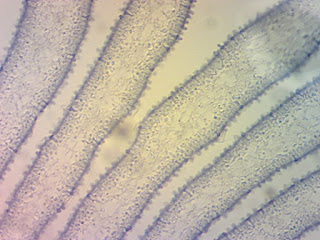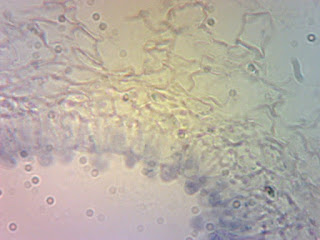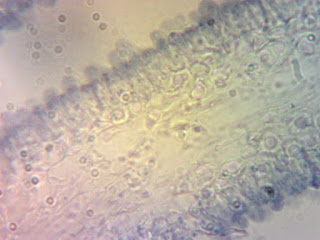In this review, we introduce Vorticella as
a model biological micromachine for microscale engineering systems. Vorticella has
two motile organelles: the oral cilia of the zooid and the contractile
spasmoneme in the stalk. The oral cilia beat periodically, generating a water
flow that translates food particles toward the animal at speeds in the order of
0.1–1 mm/s. The ciliary flow of Vorticella has been
characterized by experimental measurement and theoretical modeling, and tested
for flow control and mixing in microfluidic systems. The spasmoneme contracts
in a few milliseconds, coiling the stalk and moving the zooid at 15–90 mm/s.
Because the spasmoneme generates tension in the order of 10–100 nN, powered by
calcium ion binding, it serves as a model system for biomimetic actuators in
microscale engineering systems. The spasmonemal contraction of Vorticella has
been characterized by experimental measurement of its dynamics and energetics,
and both live and extracted Vorticellae have been tested for
moving microscale objects. We describe past work to elucidate the contraction
mechanism of the spasmoneme, recognizing that past and continuing efforts will
increase the possibilities of using the spasmoneme as a microscale actuator as
well as leading towards bioinspired actuators mimicking the spasmoneme.
Keywords: Vorticella, oral cilia, feeding current, contractile stalk, spasmoneme, Ca2+-powered contraction, bioinspired engineering
1.1. Overview of Vorticella
Among various microorganisms, protozoa have been widely studied as model systems for biology, physics, engineering and biomimetics. They form a diverse group of unicellular eukaryotic organisms including ciliates, flagellates and amoeboids. Among such protists, Vorticella has drawn the attention of scientists since Anthony van Leeuwenhoek first described its unique motility in his letter dated 9 October 1676. In a recent study, Vorticella was discovered in a fossil that is more than 200 million year old, bolstering the fossil record of soft-bodied organisms [3]. While we primarily describe biomechanical and biomimetic aspects of Vorticella, uncovered since the 1950s, it is worth noting that Vorticella has played a long and ongoing role in many fields of biological, physical and engineering study.








